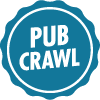The Value of ARCs
Because 1) my brain froze during the Polar Vortex 2.0 and 2) I then melted it working feverishly on revisions this weekend, I done goofed in not pulling together the Day in the Life post I'd been planning on (stay tuned for March!). But Erin came to my rescue by asking a really interesting question--something I've actually been pondering myself:
I think this is a really relevant topic, not only in relation to ARCs, but all the marketing materials that publishers are producing. Now, to give you a little context: I'd consider the golden age of marketing promotional materials ("promo," if you want to use the publishing lingo) happened probably five or ten years before I ever arrived onto the scene. You should hear the way my coworkers talk about it! We're talking large quantities of little bottles of "fairy dust," t-shirts galore, more bags than you would ever need in your life, super fancy brochures, beach towels--you get the picture! Nowadays, we stick mostly to paper: postcards, guides, one-sheets of activities, bookmarks. Not quite as, you know, radical as bottles of fairy dust! I think what changed was that while marketing budgets tightened, money also had to be set aside for new digital assets. It's actually very expensive to hire companies to produce book trailers and cool, interactive websites. And while website advertising still isn't quite as expensive as print advertising in magazines and newspapers, it can run pretty high depending on placement and the length of the campaign.
ARCs have always been considered marketing materials by publishers. They pay to have them printed at a total loss--meaning, they don't make a cent of actual profit off giving the product away for free. (This is also why publishers/industry types get grouchy when it comes to booksellers and bloggers reselling ARCs despite, you know, the little "Not for sale " burst that's usually included on the ARC cover.) They're giving the ARCs away on the good faith reviewers and store owners will use them to help build buzz by sharing them with others. This allows publishers to solicit quotes/blurbs they can include in their marketing and sales materials, too.
The way an ARC is presented can actually tell you quite a bit about a title, and how much support a publisher is throwing behind it. A few years ago, publishers started producing "deluxe" ARCs. In layman's terms, these are the ARCs with the super fancy covers--covers with the kind of effects (foil, emboss, spot gloss) that you'd generally only see on finished books. These are expensive to print, so only a few titles on a list are bound to get this treatment, and those are the titles with bigger marketing budgets behind them--"lead titles," as we call them. One glance, and a book buyer knows that it's a book they need to pay attention to. Similarly, including marketing plans on the back cover or inside back cover is the more traditional way of showing-without-stating-explicity a title is a big push for the house, or... a not-so-big push, but still an excellent read. These plans also reveal the target market for the book.
If a book doesn't have an ARC, it's usually because the manuscript came in late and missed the mailing deadline, it's the third/fourth/fifth/sixth book in a series with an established fan base, or the title is e-only. Every house has different policies on this.
To answer Erin's exact question: yes, I'd wager that almost all publishers would agree physical ARCs are still a valuable part of any marketing campaign. Distributing ARCs at conferences like ALA and BEA is an incredibly efficient way of getting the story out there into the hands of industry bigmouths. Though, that said, it wouldn't surprise me to see publishers cut back on the number of ARCs they're printing, or a shift to producing digital-only ARCs for quieter titles as a way to continue to trim marketing budgets.
Digital materials are a way of potentially reaching a broader audience outside of the publishing community—they're more "discoverable" to the general public, if you will. Publishers can curate them on their websites by category to help readers find readalikes to series and genres they already love. Unlike print ARCs, digital galleys come at no cost to publishers and through NetGalley and Edelweiss, they can still ensure they reach reviewers, buyers, and librarians. And, yes, book bloggers too! The pitfalls, of course, are that e-ARCs are starting to be pirated with more frequency, and those without e-readers are left out of the fun.
One last thing about chapter samplers--publishers use both digital and print samplers. Like I mentioned before, most of the promo publishers produce today are paper-based, and these are, all things considered, relatively inexpensive to print and distribute. They get a lot of bang for their buck, so to speak, by including samples from multiple books that fall within the same genre. Chapter samplers seem to have the most value when they're being distributed at non-industry events such as concerts and movie theater screenings--they're light and small enough to be easily stashed in a purse or pocket. The ultimate portable tease! Expect to have a few come your way if you go see Divergent, Vampire Academy, and The Maze Runner later this year!







